Invented by John Dixon Gray, Heyue Zhou, Sorrento Therapeutics Inc
The market for antibody therapeutics that bind CTLA4 is expected to grow significantly in the coming years. According to a report by Grand View Research, the global market for CTLA4 inhibitors was valued at $1.3 billion in 2020 and is expected to reach $4.7 billion by 2028, with a compound annual growth rate (CAGR) of 16.2%.
One of the main drivers of this growth is the increasing prevalence of cancer and autoimmune diseases. Cancer is one of the leading causes of death worldwide, and the demand for effective treatments is high. Antibody therapeutics that bind CTLA4 have shown promising results in clinical trials for various types of cancer, including melanoma, lung cancer, and bladder cancer. These drugs work by activating the immune system to recognize and attack cancer cells, leading to improved survival rates and fewer side effects compared to traditional chemotherapy.
Similarly, autoimmune diseases such as rheumatoid arthritis, multiple sclerosis, and lupus affect millions of people worldwide and have limited treatment options. Antibody therapeutics that bind CTLA4 can help regulate the immune system and reduce inflammation, providing relief for patients with these conditions.
Another factor contributing to the growth of the CTLA4 inhibitor market is the increasing investment in research and development by pharmaceutical companies. Several companies, including Bristol Myers Squibb, AstraZeneca, and Merck, have developed CTLA4 inhibitors that are currently in clinical trials or have been approved by regulatory agencies. These companies are also investing in combination therapies that combine CTLA4 inhibitors with other immunotherapies to improve treatment outcomes.
However, the market for antibody therapeutics that bind CTLA4 is not without challenges. One of the main concerns is the potential for immune-related adverse events (irAEs), which can occur when the immune system is overactivated. These can range from mild symptoms such as rashes and diarrhea to more severe complications such as pneumonitis and colitis. As a result, careful monitoring and management of patients receiving CTLA4 inhibitors are necessary.
In conclusion, the market for antibody therapeutics that bind CTLA4 is expected to grow significantly in the coming years due to the increasing prevalence of cancer and autoimmune diseases, as well as the investment in research and development by pharmaceutical companies. While there are challenges to overcome, the potential benefits of these drugs in improving treatment outcomes for patients make them a promising area of focus for the pharmaceutical industry.
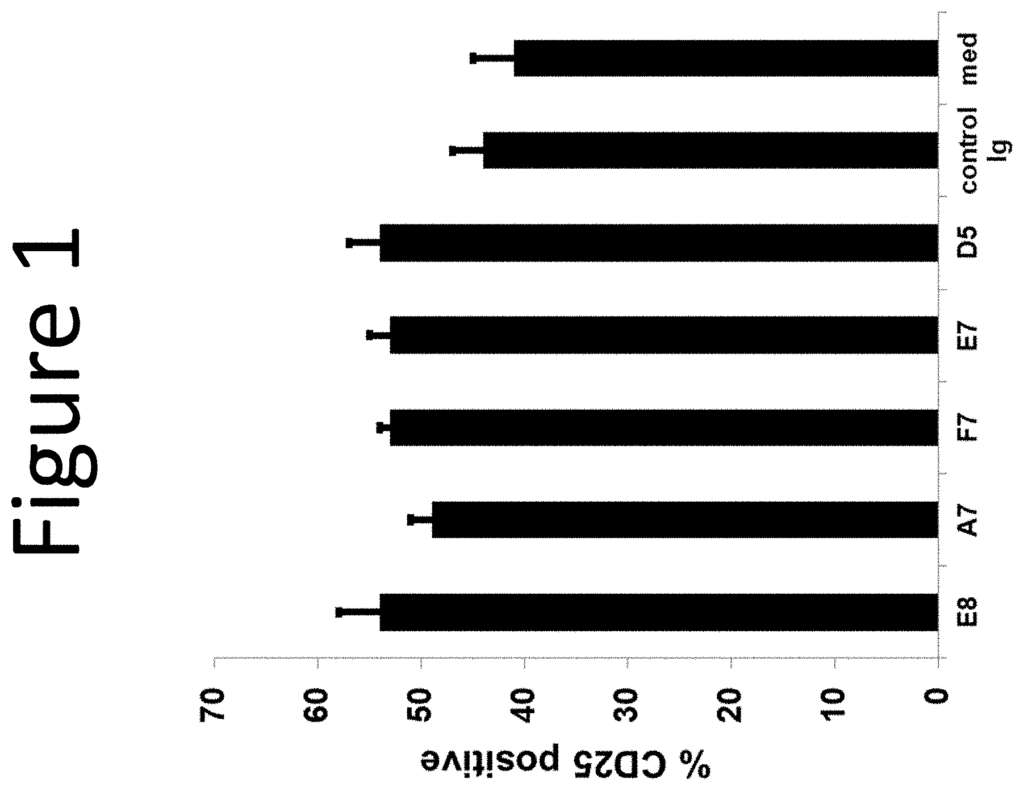
The Sorrento Therapeutics Inc invention works as follows
Compositions and methods related to or derived by anti-CTLA4 antibody are disclosed. There are also disclosed CTLA4 antibody fragments, derivatives, and polypeptides that contain these fragments. There are also disclosed nucleic acid encoding these antibodies, polypeptides and antibody fragments as well as polynucleotides. Also disclosed are methods for making antibodies, polypeptides and antibody fragments. The stimulation is achieved by antibodies that block the binding of human CTLA4 with human B7. Diseases amenable for treatment through stimulation, augmentation, or prolonging immune responses are cancers of prostate, kidney, lung, or breast, pathogenic infections, and diseases associated with CNS, e.g. Alzheimer’s and other amyloidogenic disorders, as well as diseases with an inflammatory or allergy component. Treatment is available for graft-versus-host disease, host-versusgraft disease and allergy.
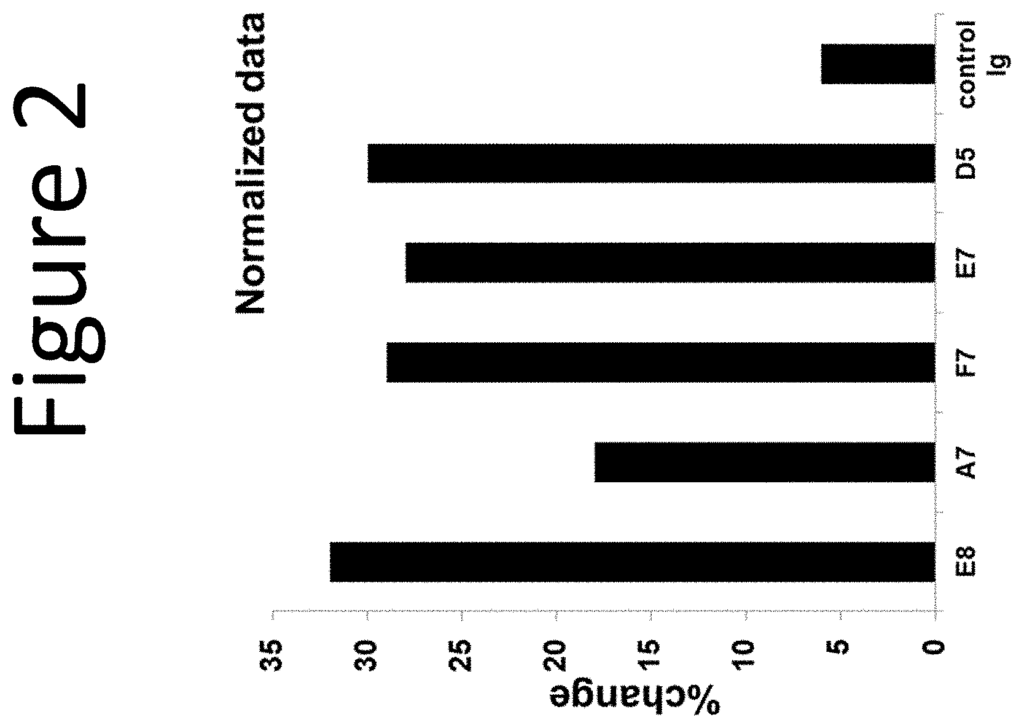
Background for Antibody Therapeutics that Bind CTLA4
The vertebrate immunity system requires multiple signaling to achieve optimal activation of the immune system; see, for example, Janeway, Cold Spring Harbor Symp. Quant. Biol. 54:1-14, 1989; Paul William E. Raven Press, N.Y. Fundamental Immunology, Fourth Edition (1998). Pay particular attention to pages 411-478, especially chapters 12 and 13. The immune response is dependent on the interaction between T lymphocytes and antigen-presenting cells. During an immune response, the levels of several cohesive molecules on T-cells and APCs increases (Springer et al. Immunol. Immunol. Kindt and long, 1:92 – 97 (1988); Hemler, Immunology today 9:109 – 113 (1988). These molecules are present in higher levels than resting APCs, which may explain why active APCs are better at stimulating T-cell proliferation against antigens. (Kaiuchi and al., J. Immunol. 131:109-114 (1983); Kreiger et al., J. Immunol. 135:2937-2945 (1985); McKenzie, J. Immunol. McKenzie, J. Immunol. 141:4083-4088 (1988)).
T-cell immune response is complex and involves cell-cell interaction (Springer, et. al. Immunol. 5:223-252, (1987), and the production of soluble mediators such as cytokines and lymphokines (Dinarello (1987), New Engl. Jour. Med. 317:940-945; Sallusto (1997) J. Exp. Med. 179:1109-1118). This response is controlled by several T cell surface receptors including the T cell receptor complex (Weiss, 1986) Ann. Rev. Immunol. Immunol. surface molecules (Allison (1994) Curr. Opin. Immunol. 6:414-419; Springer (1987) supra). These accessory molecules include many naturally occurring CD antigens, which are defined by the reactivity between monoclonal antibody on the surface cells. (McMichael ed., Leukocyte Typing, Oxford Univ. Press, Oxford, N.Y. (1987)).
CD28 is a single extracellular domain that resembles the variable region (V).” (Aruffo & Seed, supra). The homologous CTLA4 was identified through differential screening on a murine library of cytolytic T cells (Brunet (1987, Nature 328:267-2270).
CTLA4 was first identified through differential screening on a murine T-cell cDNA library” (Brunet et. al., Nature 325:267-271 (1987)). CTLA4 belongs to the superfamily of immunoglobulins (Ig). CTLA4 consists of a single extracellular Ig-domain. CTLA4 transcripts were found in T-cell populations with cytotoxic activities, suggesting CTLA4 may function in the cytolytic reaction (Brunet et. al. supra; Brunet and al. Immunol. Rev. 103-21-36 (1988)). Researchers have reported that they have cloned and mapped a gene for CTLA4’s human counterpart (Dariavach, et.al., European Journal of Immunology, vol. J. Immunol. J. Immunol. The sequence comparison of this CTLA4 human DNA with that of the CD28 proteins shows significant homology, the highest degree of which is in the juxtamembrane region and the cytoplasmic region (Brunet and al. 1988, supra, Dariavach and al. 1988, supra).
Some studies have indicated that CTLA4 is a secondary stimulator with an analogous function (Linsley and al., J. Med. 176:1595-1604 (1992); Wu et al., J. Exp. Med. Nos. 185:1327-1335 (1997) and U.S. Patent. Nos. Nos. Others have reported CTLA4 as having an opposite role, as a dampener for T cell activation. (Krummel (1995), J. Exp. Med. 182:459-465); Krummel et al., Int’l Immunol. 8:519-523 (1996); Chambers et al., Immunity. 7:885-895 (1997)). There has been a report that CTLA4-deficient mice have massive lymphoproliferation. (Chambers and al., supra). In vitro, it has been shown that CTLA4 blocking increases T cell responses (Walunas and colleagues, Immunity). In vivo, Kearney (1995), J. Immunol. Leach (1996) Science. 271:1734-1736) and exacerbates an induced autoimmune disorder (Luhder, 1998 J Exp. Med. 187:427-432). There has been a report that CTLA4 may have an additional or alternative impact on the character of the initial T-cell immune response (Chambers, 1997 Curr. Opin. Immunol. Bluestone (1997) J. Immunol. 158:1989-1993. Thompson (1997) Immunity 7, 445-450. This is in line with the observation of autoantibodies against CTLA4 in some patients with autoimmune diseases. It is possible that CTLA4-blocking antibodies play a pathogenic function in these patients (Matsui, 1999) J. Immunol. 162:4328-4335).
The studies used non-human CTLA4 antibody. The intrinsic immunogenicity in non-human immunoglobulins is a major obstacle to the development of in vivo diagnostic and therapeutic applications of antibodies in humans. When immunocompetent patients receive therapeutic doses rodent monoclonal antibody, they produce antibodies against rodent immunoglobulins. These human anti-mouse (HAMA) antibodies neutralize the therapeutic antibodies. They can also cause acute toxicity. The present disclosure provides fully human antibodies against CTLA4 to overcome these and other deficiencies of the previous antibodies.
This invention relates to anti-CTLA4 antibody fragments and binding proteins that can bind to CTLA4.
In one aspect of the disclosure, it provides a fully human anti CTLA4 antibody that belongs to an IgG subclass that binds a CTLA4 peptide with a minimum binding affinity of 10?6M. The heavy chain variable sequence is at least 95 percent identical to the amino acids sequences chosen from the group that includes SEQ ID No. 1, SEQ NO. SEQ NO. SEQ NO. 6, SEQ NO. SEQ ID No. SEQ ID No. SEQ ID No. SEQ ID No. SEQ ID No. 16, SEQ ID No. 19 SEQ ID No. 21 SEQ ID No. 23 SEQ ID No. 25 SEQ ID No. 27 SEQ ID No. SEQ NO. 31 SEQ ID No. 33 SEQ ID No. 35 SEQ ID No. 37 SEQ ID No. 39, SEQ NO. 41 and SEQ NO: 43 and has a variable domain light chain sequence that is at minimum 95% identical to amino acid sequence containing SEQ NO. 2, SEQ NO. SEQ NO. SEQ ID No. SEQ ID No. SEQ ID No. SEQ ID No. SEQ NO. 16, SEQ NO. 16, SEQ ID No. SEQ NO. 22 SEQ ID No. 22, SEQ ID No. SEQ ID No. 28 SEQ ID No. SEQ NO. 32, SEQ NO. 34, SEQ NO. 36, SEQ NO. 38 SEQ ID No. SEQ ID No. 40 42 and SEQ NO: 44. In one embodiment of the fully human antibodies, both the heavy chain and the light chain are present. The antibody also has a variable domain sequence that is selected from the SEQ ID No. group. 1/SEQ NO. 2 (called A1 herein), SEQ ID NO. 3/SEQ NO. 4 (called A2 herein), SEQ ID NO. 5/SEQ NO. 6 (called A4 herein), SEQ ID NO. 7/SEQ NO. 8 (called A7 herein), SEQ ID NO. 9/SEQ NO. 10 (called A12 herein), SEQ ID NO. 11/SEQ NO. 12 (called B6 herein), SEQ ID NO. 13/SEQ NO. 14 (called C2 herein), SEQ ID NO. 15/SEQ NO. 16 (called D6 herein), SEQ ID NO. 17/SEQ NO. 18 (called F1 herein), SEQ ID NO. 19/SEQ NO. 20 (called F3 herein), SEQ ID NO. 21/SEQ NO. 22 (called F5 herein), SEQ ID NO. 23/SEQ NO. 24 (called F6 herein), SEQ ID NO. 25/SEQ NO. 26 (called F7 herein), SEQ ID NO. 27/SEQ NO. 28 (called G1 herein), SEQ ID NO. 29/SEQ NO. 30 (called G2 herein), SEQ ID NO. 31/SEQ NO. 32 (called G3 herein), SEQ ID NO. 33/SEQ NO. 34 (called G5 herein), SEQ ID NO. 35/SEQ NO. 36 (called G12 herein), SEQ ID NO. 37/SEQ NO. 38 (called D5 herein), SEQ ID NO. 39/SEQ NO. 40 (called E7 herein), SEQ ID NO. SEQ ID NO. “42 (called E8 in this document), and SEQID NO: 43/SEQID NO: 44 (called C1E1 in this document).
In another aspect of the present disclosure, the present disclosure discloses an anti-CTLA4 full human antibody fragment containing a heavy chain variable region containing a sequence which is at least 95 % identical to an amino acids sequence selected from a group consisting SEQ ID No. 1, SEQ NO. SEQ NO. SEQ NO. SEQ NO. SEQ ID No. SEQ ID No. SEQ ID No. SEQ ID No. SEQ NO. 16, SEQ ID No. 19 SEQ ID No. 21 SEQ ID No. 23 SEQ ID No. 25 SEQ ID No. 27 SEQ ID No. 29, SEQ NO. 31 SEQ ID No. SEQ ID No. 33 35 SEQ ID No. 37 SEQ ID No. 39, SEQ NO. 41, SEQ NO: 43 and a light-chain variable domain containing a sequence at least 95% identical with an amino acid sequence chosen from the group consisting SEQ NO. 2, SEQ NO. SEQ NO. SEQ ID No. SEQ ID No. SEQ ID No. SEQ ID No. SEQ NO. 16, SEQ NO. 16, SEQ ID No. SEQ NO. 22 SEQ ID No. 22, SEQ ID No. SEQ ID No. 28 SEQ ID No. SEQ NO. SEQ ID No. 32 34, SEQ NO. 36, SEQ NO. 38 SEQ ID No. SEQ ID No. 40 SEQ ID No: 42 and 42. In one embodiment, a fully human antibody Fab-fragment has both a region of heavy chain variable and a region of light chain variable. The antibody contains a heavy/light chain domain sequence that is selected from a group consisting of SEQ ID No. 1/SEQ NO. SEQ ID No. 3/SEQ NO. SEQ ID No. 5, SEQ ID No. SEQ NO. 7, SEQ ID No. SEQ NO. 8 9, SEQ ID No. SEQ ID No. 11, SEQ ID No. 12 SEQ ID No. 13/SEQ NO. 14 SEQ ID No. 15/SEQ NO. 16 SEQ ID No. 17, SEQ ID No. 18 SEQ ID No. 19/SEQ NO. 20 SEQ ID No. 21/SEQ NO. 22 SEQ ID No. 23/SEQ NO. 24 SEQ ID No. 25/SEQ NO. 26 SEQ ID No. 27/SEQ NO. 28 SEQ ID No. 29/SEQ NO. 30 SEQ ID No. 31/SEQ NO. 32 SEQ ID No. 32, SEQ ID No. 34 SEQ ID No. 35/SEQ NO. 36 SEQ ID No. 37/SEQ NO. 38 SEQ ID No. 39/SEQ NO. 40 SEQ ID No. 41/SEQ NO. SEQ ID No: 42/SEQID NO. 44.
The present disclosure also provides a human single-chain antibody with a heavy-chain variable domain and light-chain variable domain that are connected by a linker peptide, wherein heavy chain variable contains an amino acid a sequence at least 95% identical to a sequence of amino acids selected from the group consisting SEQ ID No. 1, SEQ NO. SEQ NO. SEQ NO. SEQ NO. SEQ ID No. SEQ ID No. SEQ ID No. SEQ ID No. SEQ NO. 16, SEQ ID No. 19 SEQ ID No. 21 SEQ ID No. 23 SEQ ID No. 25 SEQ ID No. 27 SEQ ID No. SEQ NO. 31 SEQ ID No. SEQ ID No. 33 35 SEQ ID No. 37 SEQ ID No. 39, SEQ NO. 41 and SEQ NO: 43 and wherein light chain variable domain consists of an amino-acid sequence that is at minimum 95% identical to a sequence chosen from the group consisting SEQ NO. SEQ ID No. SEQ NO. SEQ ID No. SEQ ID No. SEQ ID No. SEQ ID No. SEQ NO. SEQ NO. 16, SEQ ID No. SEQ NO. 22 SEQ ID No. 22, SEQ ID No. SEQ ID No. 28 SEQ ID No. SEQ NO. 32, SEQ NO. SEQ ID No. 34 36, SEQ NO. 38 SEQ ID No. SEQ ID No. 40 42 and SEQ NO: 44. In certain embodiments the fully human single-chain antibody has both a region of heavy chain variable and a region of light chain variable, where the heavy chain/light cyle variable domain sequence is selected from a group consisting SEQ ID No. 1/SEQ NO. SEQ ID No. 3/SEQ NO. 4, SEQ NO. 5, SEQ ID No. 6, SEQ NO. 7, SEQ ID No. 8, SEQ NO. 9, SEQ ID No. 10, SEQ NO. 11, SEQ ID No. 12 SEQ ID No. 13/SEQ NO. 14 SEQ ID No. 15/SEQ NO. 16 SEQ ID No. 17, SEQ ID No. 18 SEQ ID No. 19/SEQ NO. 20 SEQ ID No. 21/SEQ NO. 22 SEQ ID No. 23/SEQ NO. 24 SEQ ID No. 25/SEQ NO. 26 SEQ ID No. 27/SEQ NO. 28 SEQ ID No. 29/SEQ NO. 30 SEQ ID No. 31/SEQ NO. 32 SEQ ID No. 32, SEQ ID No. 34 SEQ ID No. 35/SEQ NO. 36 SEQ ID No. 37/SEQ NO. 38 SEQ ID No. 39/SEQ NO. 40 SEQ ID No. 41/SEQ NO. 42 and SEQ NO. SEQ ID No. 44.
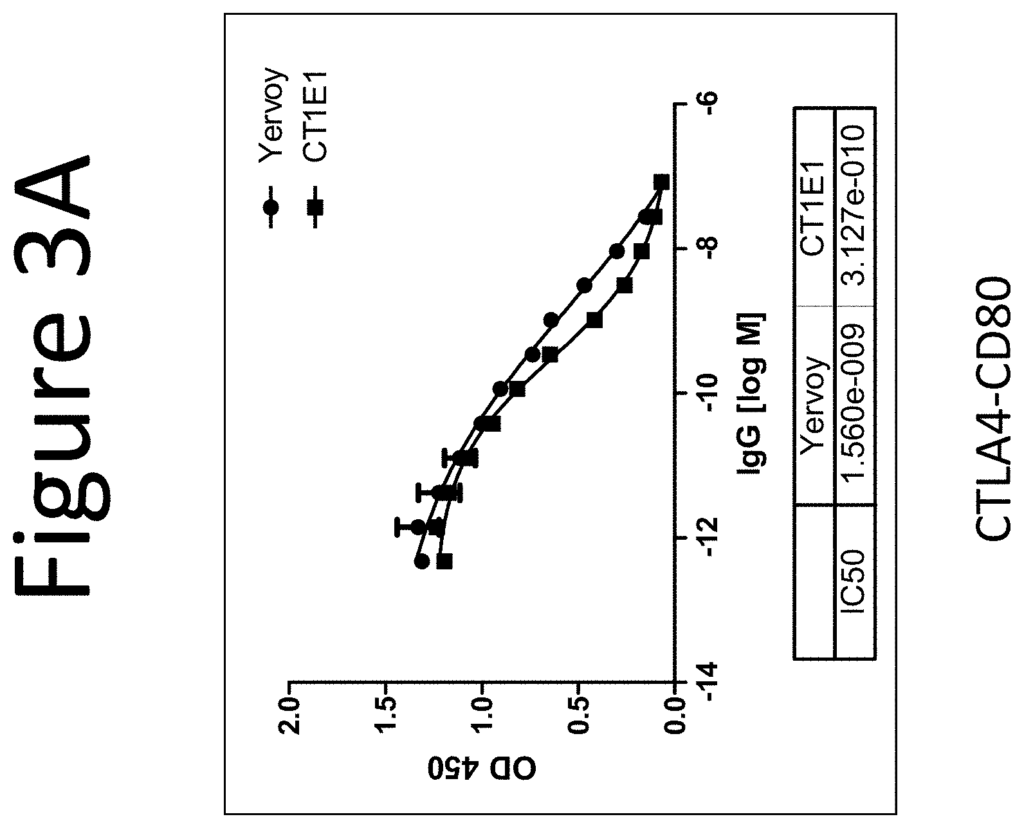
Also, included in the invention is an anti-CTLA4 antigen-binding antibody or fragment, which contains a heavy-chain variable domain containing complementarity-determining regions (CDRs), as described in a heavy-chain variable region amino-acid sequence selected from a group consisting SEQ ID No. 1, SEQ NO. SEQ NO. SEQ NO. 6, SEQ NO. SEQ ID No. SEQ ID No. 11, SEQ NO. SEQ ID No. SEQ ID No. 16, SEQ ID No. 19 SEQ ID No. 21 SEQ ID No. 23 SEQ ID No. 25 SEQ ID No. 27 SEQ ID No. SEQ NO. 31 SEQ ID No. SEQ ID No. 33 35 SEQ ID No. 37, SEQ NO. SEQ NO: 39 and SEQ NO: 43, and a variable light-chain region containing CDRs in accordance with a sequence of amino acids for the light-chain variable region selected from a group consisting SEQ NO. 2, SEQ NO. SEQ NO. SEQ ID No. SEQ ID No. SEQ ID No. SEQ ID No. SEQ NO. SEQ NO. 16, SEQ ID No. SEQ NO. 22 SEQ ID No. 22, SEQ ID No. SEQ ID No. 28 SEQ ID No. SEQ NO. 32, SEQ NO. SEQ ID No. 34 36, SEQ NO. SEQ ID No. 38 “40, SEQ ID No. 44.
The present disclosure also provides a method of treating a condition requiring either stimulation or suppression of immune responses, which includes administering an antiCTLA4 monopeptide. This antiCTLA4 monopeptide can be selected from a group consisting: of an isolated, fully human IgG antibody that binds CTLA4; an antiCTLA4 Fab fragment that contains a large chain variable and light chain domain; and an antiCTLA4 single-chain human antibody that comprises a large chain and light chain domains The present disclosure further provides a method for treating a disease requiring either stimulation of immune responses or suppression, comprising administering an anti-CTLA4 polypeptide. This anti-CTLA4 polypeptide is selected from the group consisting of Fab fragments of bind to CTLA4 and contain corresponding heavy chain variable domains; and if the heavy chain variable domain contains an amino acid sequence that is at least 95% identical to a sequence selected from SEQ ID No. SEQ NO. 5, SEQ NO. SEQ NO. SEQ ID No. SEQ ID No. SEQ ID No. SEQ ID No. SEQ ID No. 16, SEQ ID No. 19 SEQ ID No. 21 SEQ ID No. 23 SEQ ID No. 25 SEQ ID No. 27 SEQ ID No. SEQ NO. 31 SEQ ID No. 33 SEQ ID No. 35 SEQ ID No. 37 SEQ ID No. 39 SEQ ID No. SEQ ID No. The light chain variable domain consists of an amino-acid sequence that is at most 95% identical to one amino acid chosen from the group consisting SEQ ID No. SEQ ID No. SEQ NO. SEQ ID No. SEQ ID No. SEQ ID No. SEQ ID No. SEQ NO. SEQ NO. 16, SEQ ID No. 20, SEQ NO. 22 SEQ ID No. 22, SEQ ID No. 26, SEQ NO. 28 SEQ ID No. 30, SEQ NO. SEQ ID No. 32 SEQ ID No. 34 36, SEQ NO. 38 SEQ ID No. SEQ ID No. 40 SEQ ID No. 44.
In certain embodiments the fully human antibodies or antibody fragments have both a heavy and light chain, wherein the antibody contains a heavy/light chain variable sequence that is selected from a group of SEQ ID No. 1/SEQ NO. 2 (called A1 herein), SEQ ID NO. 3/SEQ NO. 4 (called A2 herein), SEQ ID NO. 5/SEQ NO. 6 (called A4 herein), SEQ ID NO. 7/SEQ NO. 8 (called A7 herein), SEQ ID NO. 9/SEQ NO. 10 (called A12 herein), SEQ ID NO. 11/SEQ NO. 12 (called B6 herein), SEQ ID NO. 13/SEQ NO. 14 (called C2 herein), SEQ ID NO. 15/SEQ NO. 16 (called D6 herein), SEQ ID NO. 17/SEQ NO. 18 (called F1 herein), SEQ ID NO. 19/SEQ NO. 20 (called F3 herein), SEQ ID NO. 21/SEQ NO. 22 (called F5 herein), SEQ ID NO. 23/SEQ NO. 24 (called F6 herein), SEQ ID NO. 25/SEQ NO. 26 (called F7 herein), SEQ ID NO. 27/SEQ NO. 28 (called G1 herein), SEQ ID NO. 29/SEQ NO. 30 (called G2 herein), SEQ ID NO. 31/SEQ NO. 32 (called G3 herein), SEQ ID NO. 33/SEQ NO. 34 (called G5 herein), SEQ ID NO. 35/SEQ NO. 36 (called G12 herein), SEQ ID NO. 37/SEQ NO. 38 (called D5 herein), SEQ ID NO. 39/SEQ NO. 40 (called E7 herein), SEQ ID NO. SEQ ID NO. 42 (called E8 in this document) and SEQ ID No. SEQ ID No. 44 (called CT1E1 herein).
In certain embodiments the antibody is IgG1 in isotype. Other embodiments use an IgG4 antibody.
In certain embodiments the antigen binding fragment or antibody described herein, is recombinant.
The invention also provides pharmaceutical formulations containing an effective amount or anti-CTLA4 fragments or antibodies disclosed herein and a pharmaceutically accepted carrier.
The invention, in certain embodiments, features a method for treating cancer on a human being in need of it, which involves administering to the patient an anti-CTLA4 antigen binding fragment or an anti-CTLA4 antigen, as disclosed herein.
In a preferred form, the cancer has a detrimental CTLA4-related activity.” These types of cancers include, but aren’t limited to: bladder cancers, blood cancers, brain tumors, colon cancers, fibrosarcomas, lung cancers, ovarian and prostate cancers, melanomas, lymphomas, mesotheliomas, and plasmacytomas.
The disease can be selected from the following groups: cancers of the kidney, prostate, colon, lung, or breast; pathogenic infection; diseases of the CNS; amyloidogenic Alzheimer?s disease; and diseases containing inflammatory or allergy components such as graft-versus-host disease, host-versus graft diseases, allergy, and autoimmune diseases.
DESCRIPTION DU DRAWINGS
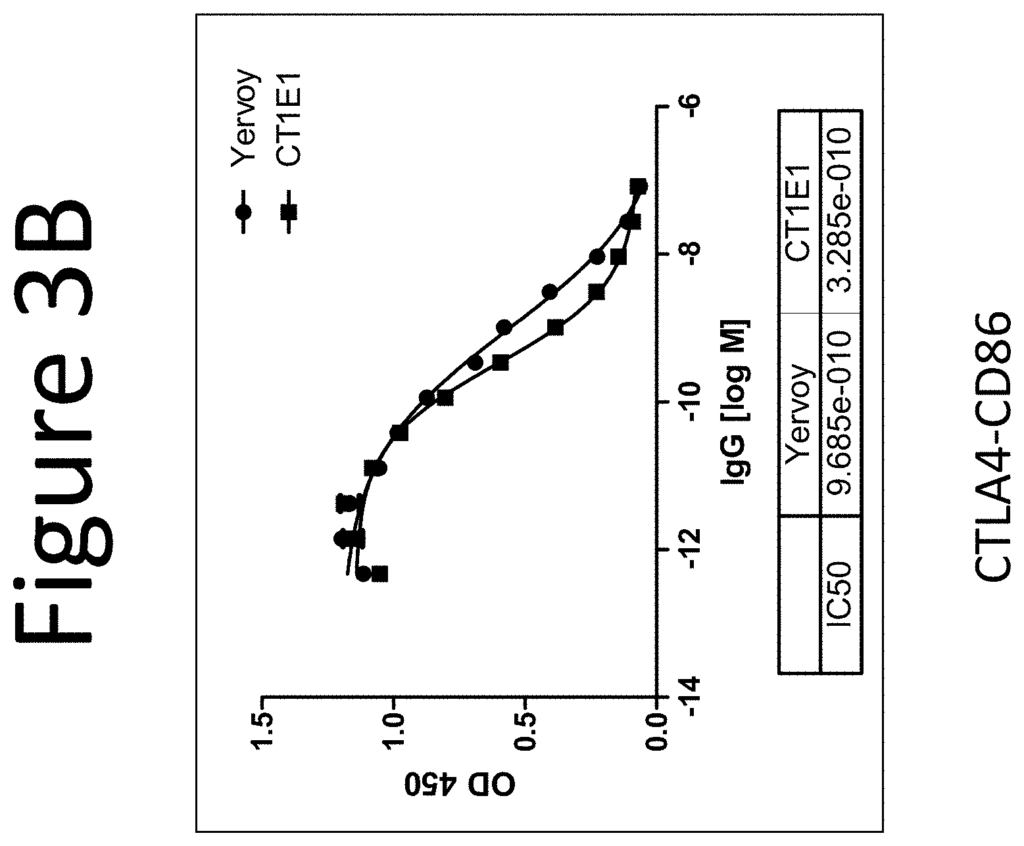
Click here to view the patent on Google Patents.
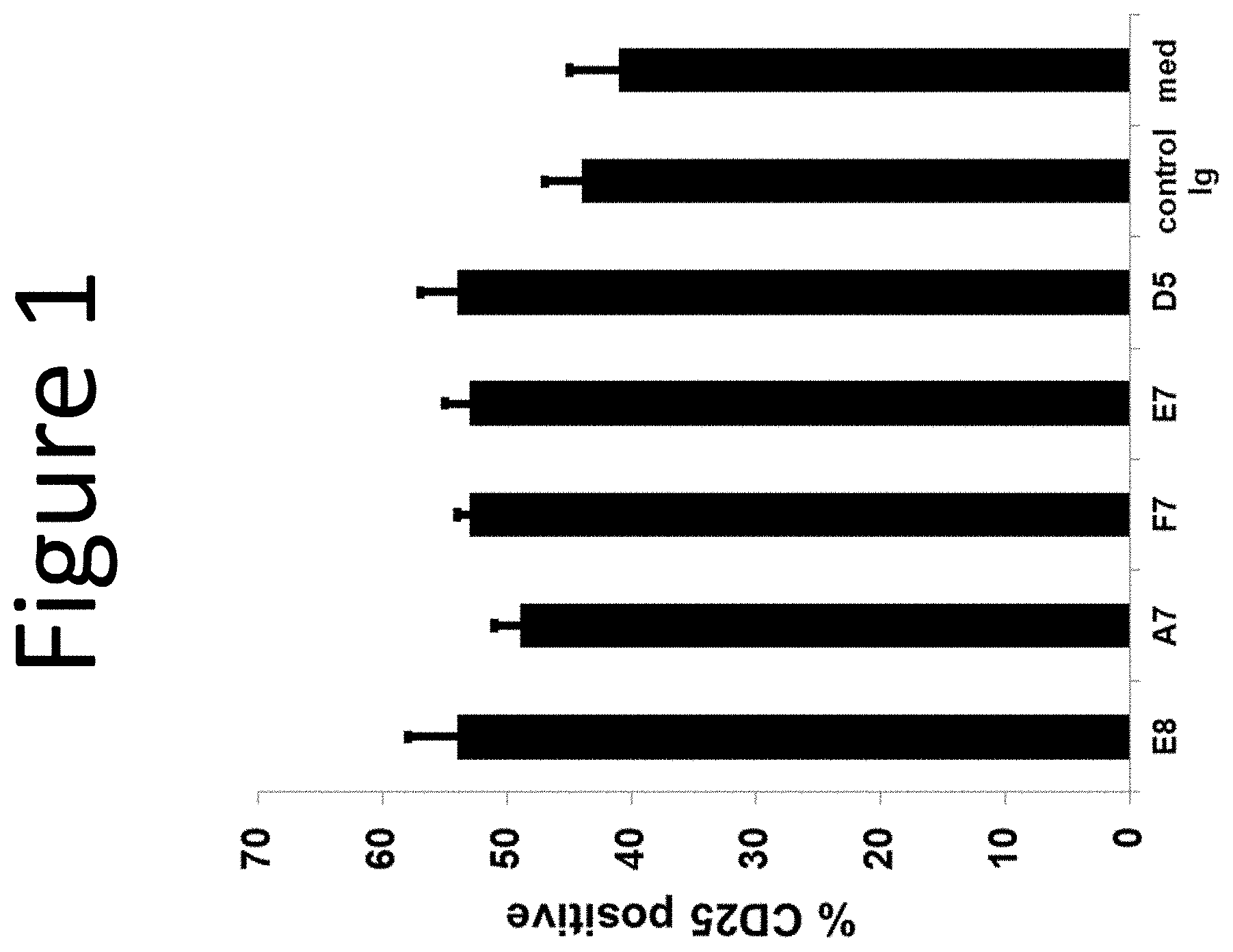
Leave a Reply